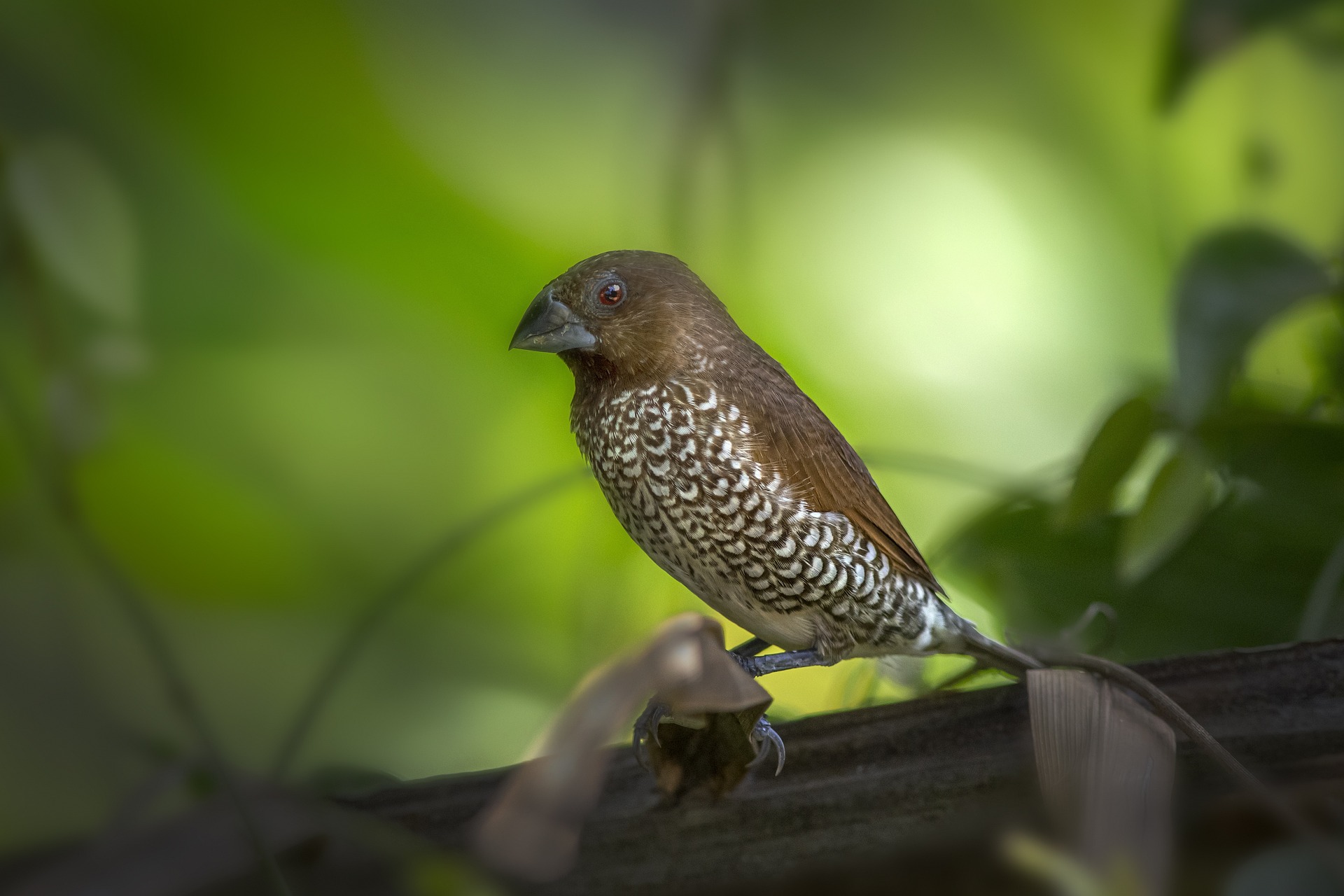The Scaly-breasted Munia (Lonchura punctulata), also known as the Nutmeg Mannikin or Spice Finch, is a small passerine bird belonging to the family Estrildidae. This bird is known for its distinctive scaly pattern on the breast and its social nature. Here’s an overview of the Scaly-breasted Munia:
Appearance:
- Size: The Scaly-breasted Munia is a small bird, measuring about 11 to 12 centimeters in length.
- Coloration:
- Plumage: It has brown upperparts and a distinctive scaly pattern on the underparts, created by dark brown feathers edged with white or pale buff.
- Head: The head is generally a warm brown color, blending into the rest of the body.
- Bill: The bill is thick and conical, well-suited for seed eating, and is a bluish-gray color.
- Eyes: The eyes are dark brown.
Habitat:
- Preferred Habitats: The Scaly-breasted Munia thrives in a variety of open and semi-open habitats including grasslands, agricultural fields, scrublands, and urban gardens.
- Geographic Range: It is native to tropical Asia, ranging from India and Sri Lanka to Indonesia and the Philippines. It has also been introduced to other parts of the world, including Australia and the United States.
Behavior:
- Feeding: The Scaly-breasted Munia primarily feeds on seeds, particularly grass seeds. It forages both on the ground and in vegetation. Occasionally, it may also eat small insects.
- Social Structure: These birds are highly social and are often seen in flocks, especially outside the breeding season. They communicate with soft calls and whistles.
- Nesting: They build large, domed nests made of grasses and other plant materials. Nests are typically placed in bushes, trees, or even man-made structures.
Life Cycle:
- Breeding: The breeding season varies by location but often coincides with the availability of food. In tropical regions, they may breed throughout the year.
- Eggs: Females lay 4 to 6 white eggs.
- Incubation and Fledging: Both parents share the incubation duties, which last about 12 to 14 days. The chicks fledge about 21 days after hatching but remain dependent on the parents for a while longer.
Ecological Role:
- Seed Dispersal: As seed eaters, Scaly-breasted Munias play a role in the dispersal of grass and other plant seeds.
- Pest Control: By occasionally feeding on insects, they help control insect populations in their habitats.
Conservation Status:
- Population: The Scaly-breasted Munia is not considered threatened and has a stable population across most of its range. It is classified as Least Concern by the IUCN.
- Adaptability: Its ability to thrive in a range of habitats, including urban areas, contributes to its stable population status.
Interesting Facts:
- Pet Trade: The Scaly-breasted Munia is popular in the pet trade due to its attractive appearance and social nature.
- Introduced Populations: Introduced populations have established in various parts of the world, often due to escapes from captivity.
- Flocking Behavior: These birds exhibit strong flocking behavior, which helps them avoid predators and locate food more efficiently.
Identification Tips:
- Scaly Pattern: Look for the distinctive scaly pattern on the underparts, which is a key identifying feature.
- Brown Plumage: The warm brown coloration of the upperparts and head helps differentiate it from other similar-sized birds.
- Social Behavior: Observing their social, flocking behavior can also aid in identification.
In summary, the Scaly-breasted Munia (Lonchura punctulata) is a charming and social bird species with a distinctive appearance and widespread presence. Its adaptability to various habitats and its role in seed dispersal make it an important part of the ecosystems it inhabits.
Visited 3 times, 1 visit(s) today
Views: 12
Subscribe to the newsletter:
